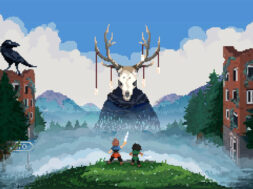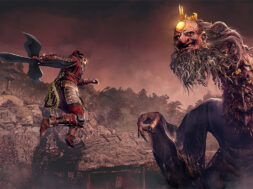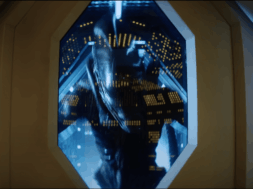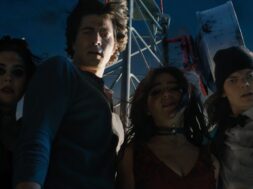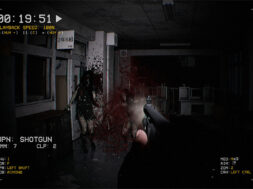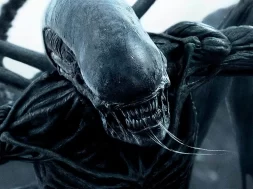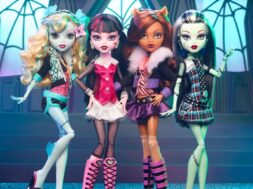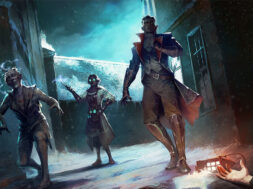With horror industry heavy hitters already in place from the 1970s, the 1980s built upon that with the rise of brilliant minds in makeup and effects artists, as well as advances in technology. Artists like Rick Baker, Rob Bottin, Alec Gillis, Tom Woodruff Jr., Tom Savini, Stan Winston, and countless other artists that delivered groundbreaking, mind-blowing practical effects that ushered in the pre-CGI Golden Age of Cinema. Which meant a glorious glut of creatures in horror. More than just a technical marvel, the creatures on display in ‘80s horror meant tangible texture that still holds up decades later. Grotesque slimy skin to brutal transformation sequences, there wasn’t anything the artists couldn’t create. It Came From the ‘80s is a series that will pay homage to the monstrous, deadly, and often slimy creatures that made the ‘80s such a fantastic decade in horror.
By the time David Cronenberg’s The Fly released in August of 1986, the golden era of practical effects had already mastered monstrous transformation sequences with films like An American Werewolf in London, The Howling, The Thing, and many more. Just when horror fans thought they’d seen it all, special creature effects artist Chris Walas (Gremlins), his crew from FX company Chris Walas, Inc., and makeup effects supervisor Stephan DuPuis sought to create Seth Brundle’s transition from man to insect-creature unlike anything else ever seen before. The result was a creature design and makeup effects that clinched together Cronenberg’s tragic tale of star-crossed lovers and earned Walas and DuPuis an Oscar for Best Makeup.
The Fly begins as a meet-cute between brilliant yet socially awkward scientist Seth Brundle (Jeff Goldblum) and journalist Veronica Quaife (Geena Davis). He entices her back to his home turned lab to show off his project; a pair of teleportation pods meant to deliver instant transportation between them. He offers Veronica exclusive rights for an article in exchange for silence, and the pair wind up falling for each other in process. But their growing love sparks human emotions like jealousy, leading Seth to test the pods on himself, unaware a fly has slipped into the pod with him. This begins a slow transformation from man to insect hybrid to completely inhuman creature.
There are seven stages of transformation for Brundle, beginning very subtle and gradually growing more grotesque with transitions similar to insect stages of growth, Walas taking care to avoid the bladder effects that gave other transformations familiarity. Stage one only gives Brundle blotchy skin, like an allergic reaction, which becomes more accentuated with scabs, warts, and oozing fingernails in the second stage. Stage three sees Brundle looking more diseased, with Goldblum sporting appliances and prosthetics that give his head a wider appearance as his hair and ears fall off. Stage four makes Brundle even less recognizable, with complete facial appliances and a full body suit – it’s here that he’s losing his teeth and developing bulges that will later give way to extra insect legs. Stage five distorts this further, requiring at minimum four hours of application. This stage also introduced a mechanical puppet replica of Brundle’s head to extend the lower jaw and push forth a fly tongue. The puppetry also bridged the transition from the fifth stage to the sixth, a gruesome transformation of splitting skin as insect parts emerge, operated via rigs by multiple crew members at once. Stage six was the most involved, as the animatronics involved in Brundle’s full fusion of man and fly didn’t just mean more body parts falling away but also the vomit digestion of Stathis Borans’ (John Getz) hand and foot. The final stage was an impressive rod puppet rigged with hydraulics, motors, and cable systems that took eight crew members to operate from beneath it.
As if that wasn’t enough, Walas and team also produced the writhing maggot puppet for Veronica’s nightmare sequence, a protruding bone via arm wrestling mishap, the cringe-worthy inside-out baboon, and the unforgettable melting mutilation of Stathis’ limbs. The vomit was DuPuis’ secret recipe consisting of edible materials like honey, flour, and food coloring. Cronenberg didn’t want much blood in the film, but what it lacked in blood it more than made up for in slime, ooze, and icky insect bodily fluids.
And that’s just the stuff that made the final cut. A lot of the stage four makeup wound up on the cutting room floor because it also happened to feature Brundle beating a mutated cat-monkey creature he unwittingly created with a lead pipe. Understandably, it was deemed too intense and undid a lot of the sympathy towards Brundle. Luckily the scene is easy enough to find in the deleted scenes on the DVD release. There were also scenes of Brundle chewing off his own insect arm and gnawing on a human foot that were trimmed as well.
Walas, DuPuis, and the 30 plus crew members designed and created more than two dozen different special makeup FX, rigs, and puppets, and only had roughly three months of pre-production planning to work with. Once Brundle had been cast, the team had less than a month to get Goldblum’s makeup designed, casted, and customized to the actor. Cronenberg and the lead actors imbued this tragic tale with emotion, sympathetic characters, engrossing story, and layered themes. But the stunning work that the Chris Walas, Inc. crew delivered takes that story and makes it felt on a visceral level. Walas and DuPuis’ work is every bit deserving of that Oscar and helped make The Fly forever a classic.
